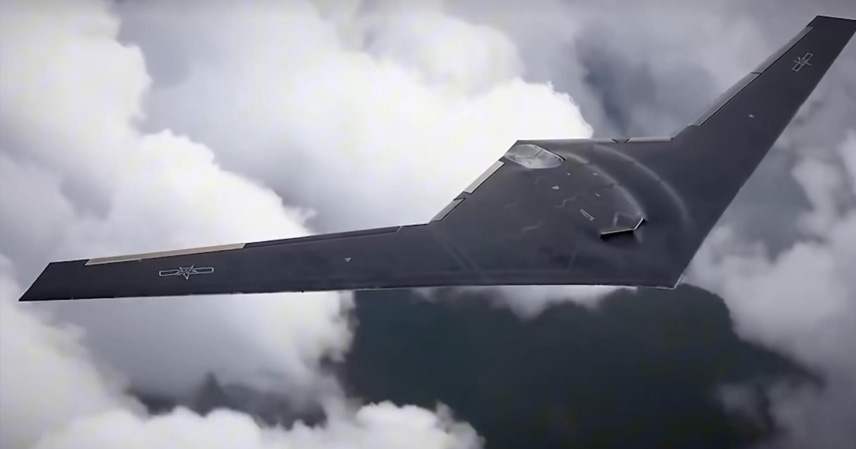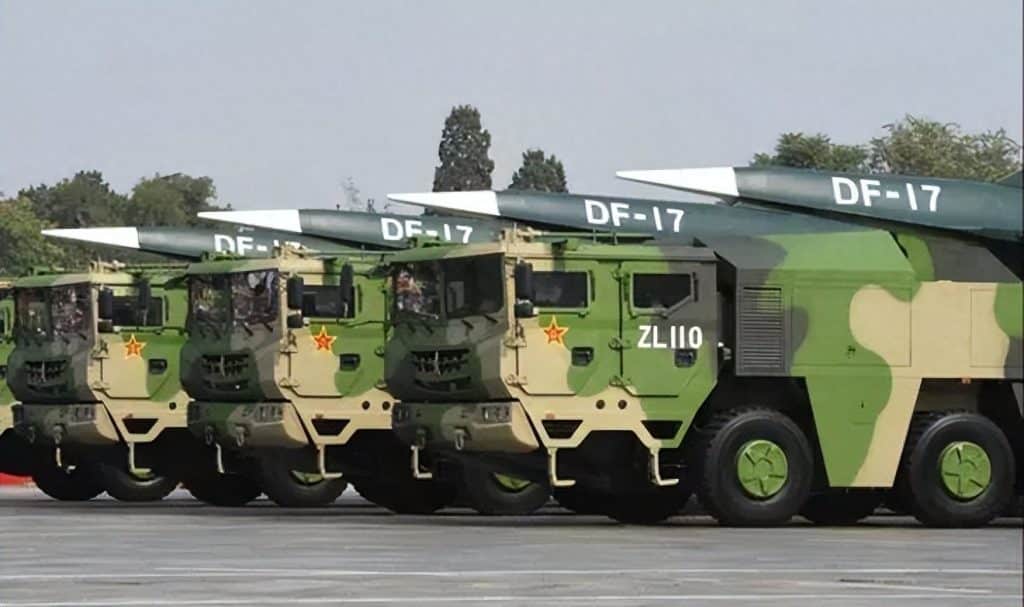September has been a banquet for defense watchers: the 9/3 grand military parade, the Fujian carrier’s electromagnetic launches of three carrier aircraft, and even an unmanned version of the H-20 leaking into view — new PLA equipment has surprised repeatedly, with weapons development entering a burst phase.
01. An unmanned H-20 exposed! U.S. analysts: bigger than the B-21
Last week, U.S. defense outlet The War Zone and analyst Michael Peck reported that commercial satellite imagery unexpectedly captured a very large flying-wing aircraft taxiing or preparing for takeoff at China’s Malan airbase.
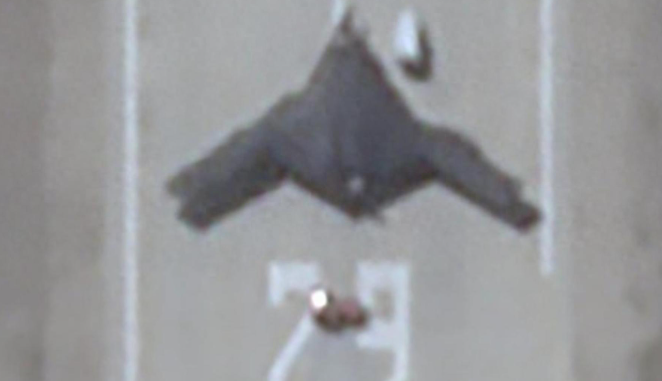
U.S. analysts noted that Malan is an air force test site long used for unmanned platform trials; equipment seen at Malan often indicates a system has entered a critical stage of operational testing. Analysts therefore judged this large aircraft was highly likely an unmanned platform — in particular, an unmanned variant of the H-20. The reasoning: the crewed strategic bomber H-20 would normally be tested at a dedicated manned test base, while Malan specializes in UAV testing.
Observers expect the crewed H-20 strategic bomber to be an intercontinental, manned platform, with dimensions closer to the B-2 to accommodate a cockpit and the massive fuel load required for transcontinental range. The aircraft spotted at Malan, by contrast, appears to have a shorter wingspan than a B-2 but a longer fuselage — a configuration uncommon for manned aircraft.
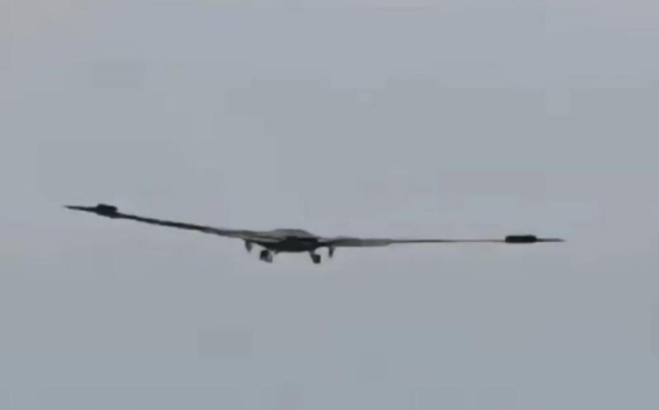
If the platform is unmanned, designers can eliminate the cockpit and related redundancies, redirecting that volume and weight to fuel and weapons. That makes long range and large payload feasible even with a relatively modest wingspan. For that reason, analysts think the Malan aircraft is likely a large unmanned stealth bomber used to validate H-20 technologies.
Another tactical advantage of large UAVs is survivability in high-risk missions: penetrating an advanced air-defense system to strike a superpower is inherently risky, but a long-endurance unmanned platform can loiter for extended periods and execute deep-penetration strikes without risking crew lives.
The U.S. analyst dubbed the Malan platform the “Malan Large Stealth UAV.” Its flying-wing blended design features no tail and a seamless wing-fuselage join. Based on runway markings and scale, the estimated wingspan is about 42 meters and fuselage length some 23–24 meters.
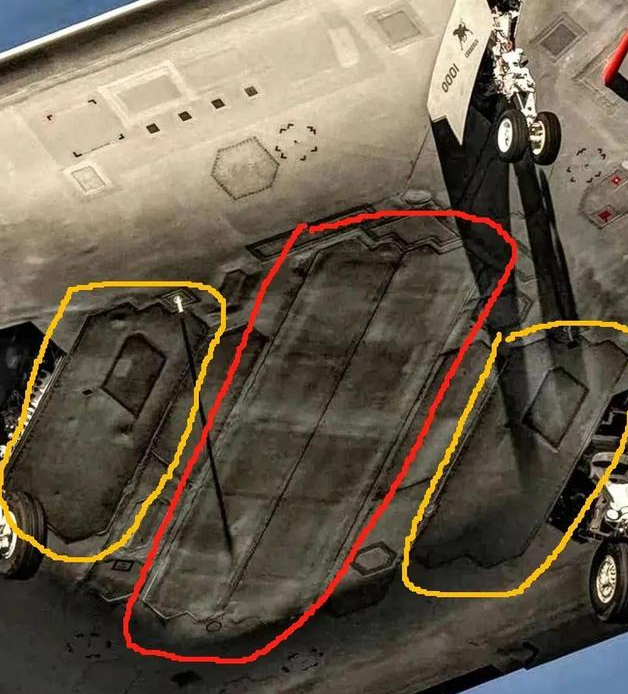
By comparison, the U.S. B-21 Raider has a wingspan of about 41 meters and a length of roughly 20 meters; the older B-2A Spirit has a wingspan around 52 meters and a length also near 20 meters. The Malan aircraft’s wingspan is slightly larger than the B-21 yet markedly smaller than the B-2 — crucially, its fuselage length (23–24 m) exceeds that of both the B-21 and the B-2. On flying-wing designs, fuselage volume is primarily used for bomb bays, fuel, and critical systems.
02. A bigger fuselage — a bigger bomb bay?
A longer fuselage generally implies a larger, deeper internal bomb bay. That’s not only about carrying more conventional munitions: it suggests the ability to carry large, long-form precision weapons — for example, air-launched hypersonic cruise missiles, hypersonic air-launched vehicles, or even large air-launched ballistic weapons. That expands both the variety and the destructive power available beyond current U.S. bomber capabilities.
U.S. analysts argue that this reflects a lesson learned: flying-wing designs historically have limited fuselage depth relative to conventional designs, so early stealth bomber concepts didn’t prioritize carrying large air-launched hypersonic missiles. As a result, today the U.S. mainly relies on the B-1B and B-52H — which have larger bomb bay space and external carriage — to field large hypersonic weapons.
That said, the U.S. itself has been behind in hypersonic air-launched missile programs. Tests of the AGM‑183 ARRW (an air-launched hypersonic prototype) repeatedly failed and the program was shelved; other hypersonic air-launched projects have been quiet. Meanwhile, China, Russia, and others have accelerated theirs.
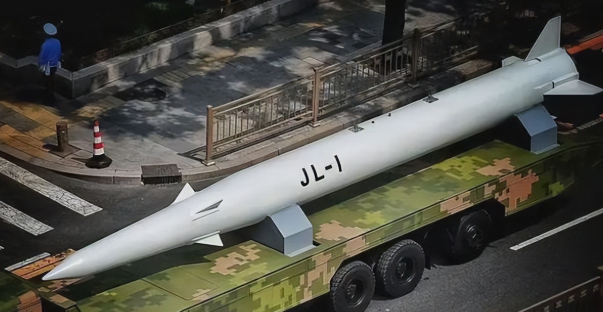
03. Could the U.S. mainland fall into range?
Analysts estimate the Malan aircraft’s bomb bay could, in theory, carry four air-launched YJ-21 hypersonic missiles or 1–2 “Jinglei-1” (the large dual-cone air-launched hypersonic weapon shown in the 9/3 parade). Because the original satellite imagery is fuzzy and the tail area unclear, the Malan aircraft’s propulsion arrangement is uncertain — it may use two or four medium-thrust high-bypass turbofan engines buried in the fuselage, similar to the B-2, to reduce infrared signature.
Conservatively, its operational radius should be similar to public claims for the B-21 — roughly 4,000–5,000 km — but removing crew accommodations and adding fuselage volume for fuel likely gives it significantly greater internal fuel capacity than the B-21. Consequently, its combat radius could be well over 6,000 km, and with aerial refueling it would extend much farther.
That excludes the range added by air-launched hypersonic missiles such as the YJ-21 (range ~1,500 km) or the Jinglei-1 (analysts estimate a minimum 3,000 km range). Taken together, in wartime this platform — even without refueling — could cover the Second and Third Island Chains, Guam, Hawaii, and coastal Alaska, and could perform stand-off strikes on targets more than 8,000 km away, raising the prospect of striking parts of the U.S. homeland in extreme scenarios.

